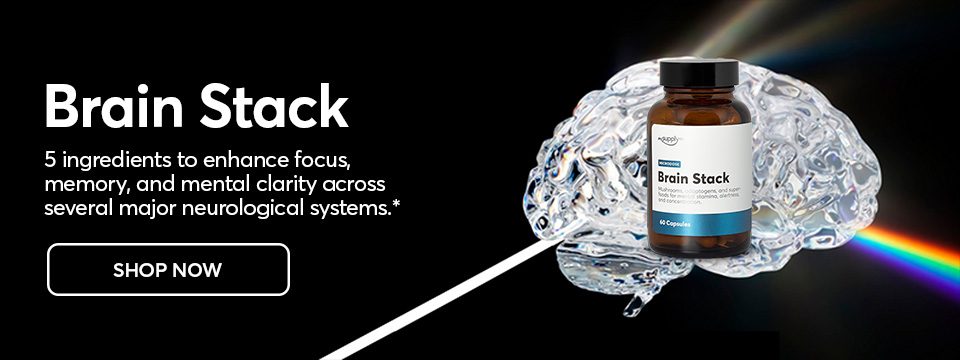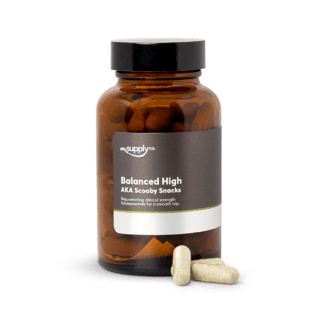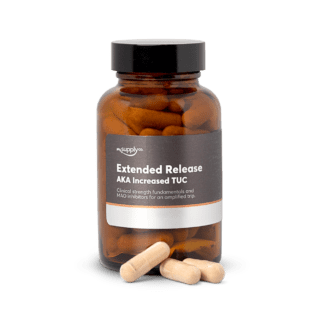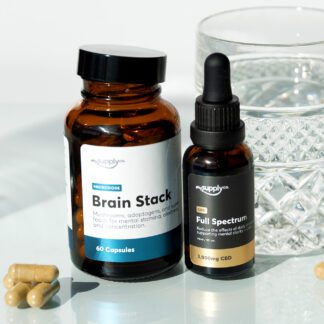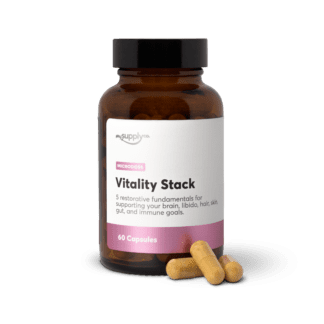When our science team formulated Brain Stack and Full Spec. CBD, it was to provide optimal nutritional support for overall brain health. But there are many behavioral factors that are also cornerstones of great brain health. And if you've ever thought meditation is merely some sort of New Age fad, you'll be surprised to learn how science-backed its mental health benefits really are.
Key takeaways:
-
Does psilocybin have benefits for physical and mental health?
Early clinical trials show that microdosing psychedelics might improve attention, long-term brain health, mood disorders, mindfulness, and well-being by improving functional brain connectivity.
-
How do the benefits of psilocybin stack up to the benefits of meditation and yoga?
It’s well established that meditation and yoga result in greater mental clarity and decreases stress. But can meditation and yoga make significant, actual changes to the brain? Yes. The studies referenced in this article not only reveal that mindfulness practices bring about positive physiological changes, but that classic psychedelics like psilocybin promote the same changes in the brain, making the connection between these practices and the brain more profound than ever before.
-
Can you microdose and do yoga?
In one study, subjects who did both microdosing and yoga showed better scores on anxiety, depression, and well-being. So preliminary studies suggest that combining the two may be beneficial, likely due to the fact that the neuroplastic mechanisms stimulated by both meditation and psilocybin had a compounding effect. Preliminary research suggests that those with anxiety gravitate towards yoga while those with depression gravitate towards microdosing psychedelics.
Many of us tend to turn to activities such as yoga and meditation to manage our mental health and stress levels, more so than for physical health. Interestingly, the same seems to be true for the use of psychedelics, and persons that practice either or both often report remarkably similar experiences. This was enough of a reason for us to look into the exact science of what happens to your brain when you're taking classic psychedelics, like psilocybin mushrooms, and when you're meditating.
Our objective is to compare the effects of psychedelics on our neurological systems — including mushroom microdosing — with those of mindful practices like yoga and meditation. Not surprisingly, the clinical results suggest that they have may just have very similar effects on your physiology and cognition.
How psilocybin impacts the brain.

Psilocybin is studied to modulate a few brain regions, but four stand out in particular: the amygdala, the prefrontal cortex (PFC), the hippocampus, and the Default Mode Network (DMN).
The amygdala, associated with fear and emotion, is involved in the initiation of the body’s response to stress. The hippocampus is the seat of our learning and memory. The prefrontal cortex is the region of the brain associated with attention planning, higher-order processing, and organization. The DMN is in charge of our sense of self. When it is overly active, we become more rigid, self-critical, and distressed.
Psilocybin is studied to improve functional connectivity — or how often they are activated together — between these brain regions to impart its brain health benefits and improve your memory, stress resilience, mental clarity, and sense of agency.
How Microdosing Effects Your Brain
In a 2019 study, Vince Polito from Macquarie University, NSW Australia, recruited 98 participants in a study exploring the effects of microdosing. The study tracked the participants over a period of 6 weeks, measuring them first at baseline and then again after a period of microdosing. The researchers used a battery of tests including depression and anxiety (DASS), mind wandering (MWQ), wellbeing (QOLI), mindfulness (MAAS), personality, creativity, etc.
For the most part, the study results were consistent with anecdotal reports — users reported a decrease in anxiety and depression from baseline after the microdosing period. They also scored higher on contemplation, connectedness, creativity, and focus.
Researchers theorize this may be caused in part by stimulating 5-HT2A receptors, particularly in the prefrontal cortex (PFC), and that microdosing for extended periods of time may cause changes in the structure of the prefrontal cortex, hippocampus, and other regions of the brain that play a central role in mood and cognition, including the posterior and anterior cingulate cortices.
Research has also found that psychedelics can cause reduced activity in the default mode network, which is a group of brain regions responsible for the normal background activity associated with daily waking consciousness, including self-reflection, metacognition, and social attributions. As a result of this reduction in neural activity, there is an increase in connectivity between regions of the brain that typically work independently of one another.
In March 2021, Vincent Polito from the research team mentioned above conducted another study on the effects of microdosing on mood, personality change, and emotional awareness. In contrast to their first study, the participants experienced an increase in conscientiousness and a decrease in neuroticism. He also observed that those with more experience in microdosing were more likely to report a decrease in neuroticism.
How Macrodosing Effects Your Brain
In 2020, results from a clinical trial published in the Journal of psychopharmacology demonstrated that after receiving psilocybin therapy, there was a decrease in functional connectivity between the ventromedial prefrontal cortex and right amygdala in response to fearful and neutral faces, but not happy faces. Additionally, there was an increase in functional connectivity between the amygdala and ventromedial prefrontal cortex to occipital-parietal cortices during face processing.
The results suggest that psilocybin therapy may help individuals become more emotionally responsive, both neurologically and psychologically. However, further research is needed to confirm these findings in larger studies that include a control group.
In another 2020 clinical trial using fMRI, twelve healthy individuals received a 25mg/70kg dose of psilocybin and were evaluated one day before, one week after, and one month after receiving the treatment. The goal was to see if psilocybin could lead to long-lasting changes in mood and brain function.
One week after receiving psilocybin, the participants reported reduced negative emotions and a decrease in amygdala response to emotional stimuli. At the same time, they had an increase in positive emotions and an increase in brain activity in the prefrontal and orbitofrontal cortices when processing conflicting emotions. One month later, the participants' negative emotions and amygdala response to emotional stimuli returned to baseline levels, but their positive emotions remained elevated, and their overall anxiety levels decreased.
The study also found an increase in the number of significant brain connections at rest between different regions of the brain one week and one month after their psilocybin treatment. These findings suggest that psilocybin could have a positive impact on emotional and brain flexibility, and that targeting negative emotions could be a potential use for psilocybin therapy. However, more research is needed to confirm these preliminary findings.
How meditation impacts the prefrontal cortex.
The prefrontal cortex is a part of the brain that allows humans to plan, pay attention, and process information. As we grow older, the prefrontal cortex gets thinner. However, according to a study by Dr. Sarah Lazar, maintaining a long-term meditation practice can help preserve the thickness of the prefrontal cortex even as we age.
The study found that meditators who have been practicing for an average of 20 years had thicker prefrontal cortex compared to non-meditators. In fact, a 50-year-old meditator had the same thickness as a 23-year-old. This suggests that meditation can help maintain brain health and function as we age.
Meditation may prevent age-related brain shrinkage (atrophy).
A recent study by Dr. Eileen Luders suggests that long-term meditation may help slow down age-related brain atrophy. This is based on the discovery that the brains of meditators, on average, look 7.5 years younger than non-meditators.
"If practiced regularly and over years, meditation may slow down aging-related brain atrophy, perhaps by positively affecting the immune system." - Eileen Lueders, Ph.D
Dr. Luders compared the morphological characteristics of meditators' and non-meditators' brains and found that the former have stronger connections between brain regions. This finding has led Dr. Luders to speculate that regular meditation over many years may positively affect the immune system. However, it's still unclear whether the brain differences between meditators and non-meditators are due to meditation, or if meditators intrinsically have different brain structures. “It’s possible that meditators might have brains that are fundamentally different to begin with,” Dr. Lueders says.
Nonetheless, meditation has been shown to be a powerful exercise that may change the physical structure of the brain.
Are meditation and working memory connected?
Mindfulness training has been shown by research to protect working memory against proactive interference. This protection is linked to the increased volume of the hippocampus, which is our learning and memory center. One possible explanation for this beneficial effect is that stress is known to decrease the volume of the hippocampus over time. As we engage in long-term meditation practices, we’re down-regulating our stress and cortisol levels, and this has a protective effect on the size of our hippocampus.
"As we engage in long-term meditation practices, we’re down-regulating our stress and cortisol levels, and this has a protective effect on the size of our hippocampus."
Moreover, meditation can help us to improve our attention, reduce distractions, and more effectively retain the contents of our working memory as we connect concepts and store memories. This has been demonstrated in a study where college students who meditated before studying for the GRE exam showed a significant improvement in their test scores.
Rewiring the anxious brain through meditation.
A remarkable study shows that the amygdala, the brain’s “fight or flight” center, shrinks after just eight weeks of mindfulness practice.
The amygdala, associated with fear and emotion, is involved in the initiation of the body’s response to stress. As the amygdala shrinks, the PFC — associated with higher-order brain functions such as awareness, concentration, and decision-making — becomes thicker.
The “functional connectivity” between these regions — i.e. how often they are activated together — also changes: the connection between the amygdala and the rest of the brain weakens, while the connections between areas associated with attention and concentration get stronger.
In other words, mindfulness practice can help us control our response to stress in a more thoughtful and less automatic way.
"As we engage in long-term meditation practices, we’re down-regulating our stress and cortisol levels, and this has a protective effect on the size of our hippocampus."
Look at it this way.
The prefrontal cortex is the parent, observing and assessing the situation objectively, while the amygdala acts like a child, reacting emotionally to the stimuli. By practicing mindfulness, the prefrontal cortex becomes more adept at rising above the physiological experience, analyzing the situation more accurately, and communicating to the amygdala to calm down. This phenomenon highlights the incredible power of mindfulness in regulating our emotional responses, leading to a more thoughtful and controlled reaction.
Psychedelics and meditation, or psychedelics or meditation?
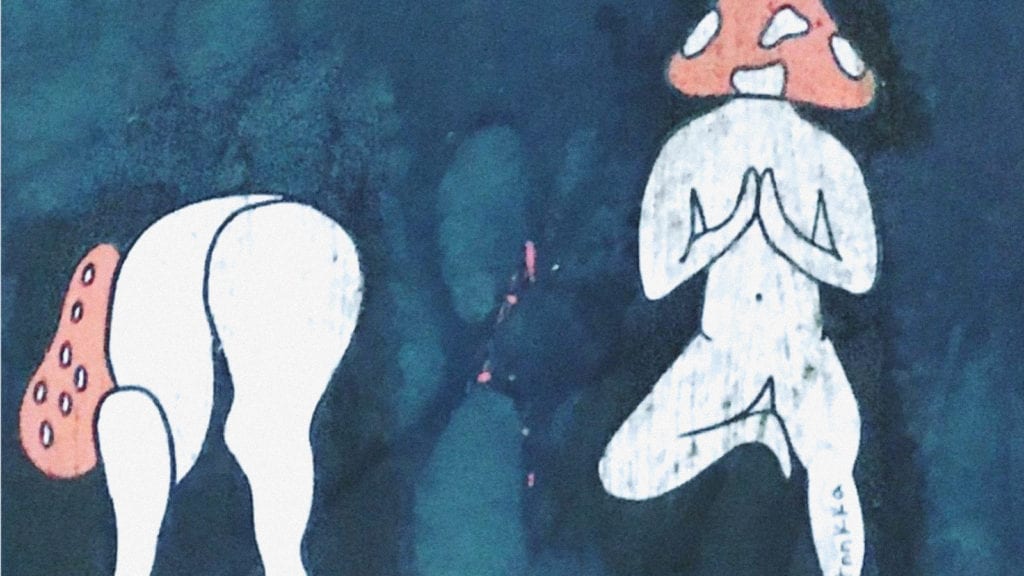
Out west of Australia, in Perth, Stephen Brights undertook research at Cowan University exploring the relationship between regular yoga practice and microdosing psychedelics. More specifically, he wanted to investigate how each of these wellness trends affects well-being and personality variables.
All up, the study included 339 participants all of whom were engaged in yoga, microdosing, or both of them. This study also included a control group, taking it a step up from the other observational studies that we’ve mentioned in this article thus far.
The primary measures were well-being and absorption. Absorption is a person’s capacity to have intense imaginatory experiences. In the context of psychology, this is important because it can actually alter health outcomes. For example, different mind-body treatment interventions can be used on those who have increased absorption capacity. In this study, both the yoga and microdosing groups scored higher on well-being and absorption.
Interestingly, those in the yoga group reported higher stress and anxiety than the microdosing or control groups, but the microdosing group reported higher depression scores than the yoga and control group. It’s not entirely clear why this is, but it suggests possible gravitation towards yoga for the anxious kind and towards psychedelics for the depressed kind.
Those who used both microdosing and yoga had lower anxiety scores than the yoga-only group and showed lower depression scores than the microdosing group. The researchers didn’t draw any conclusions about the effects of yoga and microdosing on depression or anxiety but commented that the subjective benefits between the two are comparable. They also concluded that combining the two might also be beneficial.
Same book, different pages.

Numerous studies show that meditation makes significant, actual changes to the brain. Neurohackers recognize the power of meditation to optimize focus, creativity, and long-term brain health and value supplements like Brain Stack and Full Spec. CBD to help them build a consistent meditation practice.
In addition to performance, mental health and well-being are other reasons to seek out therapies such as psychedelics and meditation. And when it comes to physical well-being, many underlying physical health conditions are manifestations of broken pathways between our mind and body and may be well-managed by integrating these practices into our every day.
Think about that for a minute; a reduction in neuroticism (i.e. tranquility), and an increase in conscientiousness (diligence). This sounds a lot like the mental health outcomes that everybody is looking for, irrespective of the psychological affliction. It’s what all of us are trying to achieve on the yoga mat or by microdosing and taking psychedelics.
Given that similar kinds of people gravitate towards these two therapies, it’s not far fetched that their outcomes are similar — otherwise why would so many people gravitate towards them! We look forward to the day that there is more objective scientific data for us to work off and better understand the benefits of microdosing. Until then, the research suggests that microdosing might be just as good for you as regular yoga practice!
Have you ever mixed microdosing with yoga? We’d love to hear your experiences — drop them in the comments.
Read: The Benefits of Microdosing Psilocybin — Without the Fluff
Read: How Psilocybin Improves Your Brain's Neuroplasticity
Read: The Ultimate Guide to Magic Mushroom Microdosing
Read: Microdose Cycling: What It Is, and Why You Should Be Doing It
Get your daily dose.
-
 2856
2856
Balanced High | Macrodose Capsules
AKA Scooby Snacks, 250mg psilocybin per capsule
-
 3060
3060
Brain Stack | Microdose Capsules
Optimal Cognition + Brain Health
-
 3060
3060
Energy Stack | Microdose Capsules
Energy + Mood + Brain Function
-
 2856
2856
Extended Release | Macrodose Capsules
AKA Increased TUC, 250mg Psilocybe cubensis per capsule
-
 20% OFF
20% OFF
Unstress Stacks → Balance + Resilience
Thrive Under Stress. Cellular Rejuvenation, Healthy Inflammation, & Immunity
-
 20% OFF
20% OFF
Unstress Stacks → Calm + Clear Duo
Nootropic regimen for daily calm, focus, memory, and mental adaptability
-
 3060
3060
Vitality Stack | Microdose Capsules
Age Backwards
